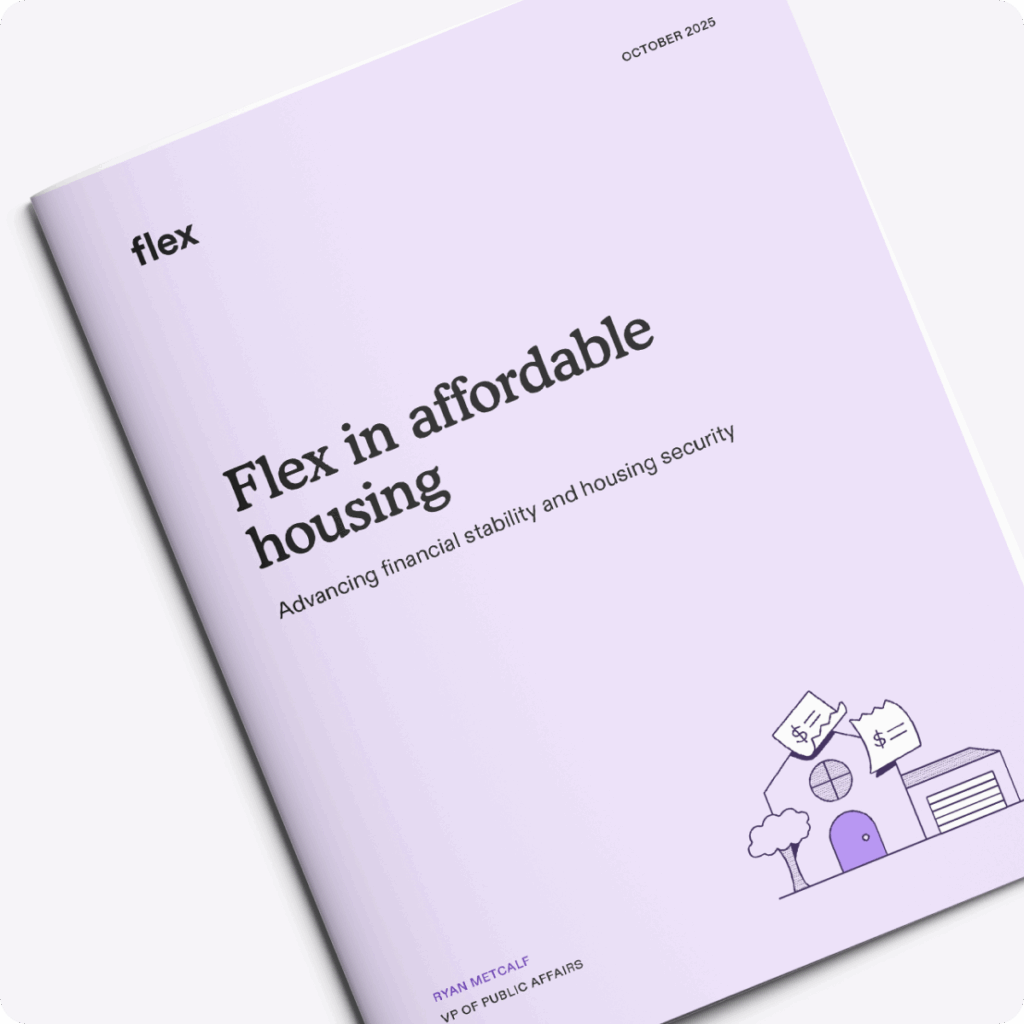Flex in affordable housing
How aligning rent with income reduces late fees, delinquencies, and eviction risk for low-income renters, while helping property managers improve on-time payments and stability.

Key findings
For renters
31%
For property managers
Inside the report
- How early-month rent deadlines trigger late fees, overdrafts, and skipped essentials
- Renter experiences when income arrives after rent is due, especially in subsidized housing
- How splitting rent reduces eviction filings and operational workload for managers
- Case studies and policy recommendations for scaling responsible rent flexibility
Why this matters now
For renters living paycheck to paycheck, timing is not a convenience but a lifeline. Aligning the largest bill of the month with when income arrives can be the difference between stability and a cycle of fees, credit damage, and displacement.
Flexible rent is a responsible financial tool that complements long-term affordability and housing-supply solutions.
Policy recommendations
1. Recognize flexible rent as a stabilizing tool
Incorporate responsible flexible rent options within eviction-prevention and tenant-support programs.
2. Fund and evaluate pilots
Partner with public housing agencies, housing finance agencies, and nonprofits to test and measure impact.
3. Broaden access through subsidies
Establish reserves and philanthropic partnerships to reach renters who do not qualify for credit-based programs.
Get the full report
The complete methodology, survey instruments, benchmarks, and case studies.

